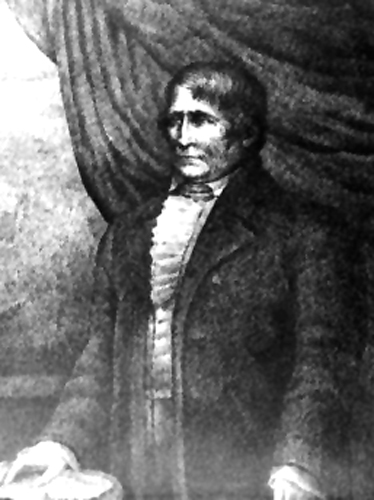
Fur trader and entrepreneur, Pierre Choteau
In the summer of 1838, only
2000 pounds of beaver pelts were sent back to St. Louis, the lowest
take since the rendezvous began in 1825. The demise of the
mountain man and the fur trade was at hand. The question that
now faced them was whether there would even be a rendezvous the
following year.
Pierre
Chouteau, a name synonymous with St. Louis and the fur trade, sent
a supply caravan to the Green river rendezvous, accompanied by Dr.
Frederick A Wislizenus, a German physician who was travelling with
missionaries bound for the Whitman's mission in Walla
Walla.
"One of our
fellow travelers, who had gone to the mountains for the first time
nine years ago with about one hundred men, estimated that by this
time half the number had fallen victims to the tomahawks of the
Indians," wrote Wislizenus, "but this daily danger seems to
exercise a magic attraction over most of them. Only with
reluctance does a trapper abandon his dangerous craft; and a
serious home-sickness seizes him when he returns from his mountain
life to civilization."
Wislizenus wisely observed: "The days of
their glory seems to be past, for constant hunting has very much
reduced the number of beavers." The 'days of glory' - a time
when a few hundred adventurous young Americans would see the North
American contient as it would never been seen again - had passed in
a short fifteen years as the ever quickening encroachment of land
hungry settlers turned the wilderness into frontier.
Related People
Related Flashpoints